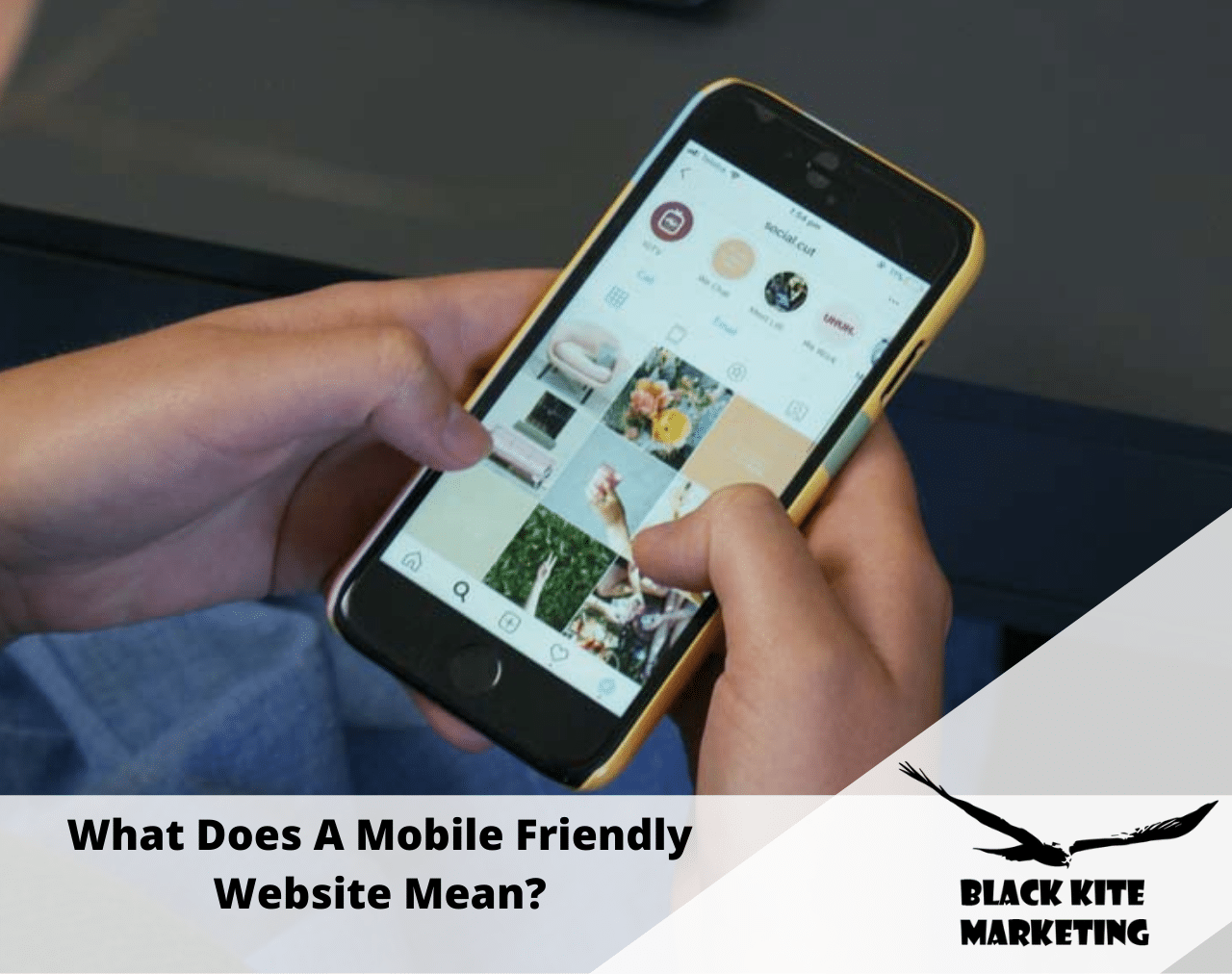
What Does A Mobile Friendly Website Mean?
The digital world is evolving and constantly changing, with trends and strategies never being stationary. It’s important to change your business tactics in order to keep up with these trends. With the growth of smartphone users, it has become essential for businesses to have a mobile friendly website.
Researchers say over 80% of internet users own a smartphone, of which 50% browse through immediately when they wake up[1]. Mobile devices have become deeply ingrained in the human mind that you invariably reach out for them for everything.
If there is a person out there that is in need of your product or service they will most likely search for it on a mobile device. This alone should be reason enough to make sure your website is mobile friendly.
What Does a Mobile Friendly Website Mean?
Even back in 2015 Google made it necessary for websites to provide mobile-friendly content. Google has made it one of the clauses for better search engine rankings. Website owners need to optimize all their assets and marketing strategies for mobile consumption and, on priority, build a mobile-friendly website.
Before getting into the details of why and how advantageous it is, let’s understand what precisely a mobile-friendly website means.
On a mobile-friendly website, the site will look and function in its authentic way on any smartphone or a tablet. The size shrinks and becomes small enough to display on a smaller screen. This improves the user experience making the navigation dropdown function smoother without having to do a lot of zooming, pinching, or scrolling to view.
Mobile-friendly Related Technologies
Other than mobile-friendly, you may come across people using different terminologies like mobile-first, responsive design, adaptive design, separate mobile website (or m dot site), and mobile apps. Lets go over what a few of these things are
1. Mobile first
Mobile first web design, as the name suggests, is when the designers focus on the websites’ most basic functions and features to suit the smallest and least- powerful mobile phones. It allows you to add more features as bigger mobile models. The mobile first is important to end-users, who are accessing websites on the go more and more frequently. When designers create designs for the larger screens like desktop and laptops, the codes are more complex than the code for smartphones. The smartphone cannot load all that code as it does not require it and this results in customers having a slow page loading experience.
2. Responsive web design
A responsive website is a site that automatically adjusts to the needs of the user and the device they use. It’s not device-specific or browser-specific. The entire content images as well as text change from the standard three-column to a single-column display. Regardless of what size screen the user is viewing from, the text, images, navigation, and graphics will size gracefully to look good and function well at any size.
3. Adaptive design
Adaptive design is similar to a responsive design but with a slight change- it uses specific layouts for different devices. While responsive designs send the same content to mobile and desktop, adaptive websites offer specific content when it detects a mobile device. It means the adaptive site does not downsize as per device specifications.
4. Separate Mobile Site (or m dot site)
When the use of mobile phones first started increasing, and before the initiation of the above technologies, businesses were investing in two websites. When responsive sites were not possible, businesses were designing two separate websites to ensure the best user experience and quality. Website developers would have to build a separate website and host it on a subdomain. So, a business would have to invest in two website designs and have two distinct URLs.
5. Mobile App
Many online giants maintain a mobile app to provide personalized services to all their mobile customers. Consumers must download the app from the app store and install it on their devices.
What Does a Customer Look for in a Mobile Site?
- Speed: People using the internet do not like to wait for a website to respond. Studies reveal only 9% of users will wait on a mobile site or app to get their information. Consumers expect a website to load within 3 seconds. It means 91% of users will look for alternative mobile sites if your site takes more than the 3 to 5 seconds barrier.
- Security: Google labels websites, without an HTTPS or SSL certificate, as non-secure. It is an indication to the consumers that such sites have the risk of hacking. So, ensure your website has the green “lock” symbol for customers to have the confidence of sharing personal information while transacting.
- User-experience: You have seen the mobile-friendly terminologies and how they differ. To give users the best experience, your site should provide the exact information they want quickly. So, a mobile-first site is more suitable than a responsive site requiring users to zoom in and out to view correctly.
- SEO: Google’s announcement in 2015 makes it very clear mobile optimization was now a factor for search engine rankings. When your ranking is high, it means more visibility and more visits which can increase conversions and overall sales and productivity.
Why Do I Need a Mobile-Friendly Website?
If you want new customers and your business to grow without losing existing clients, yes, you need a mobile website. Mobile device usage shows 5.22 billion users for 2021. 80% of internet users own a smartphone and can use it any time for some online search[2].
Customers look for a good and quick experience. If your site gives them trouble while viewing on their mobile, they will close and move to your competitor’s site. It affects your reputation, and when they talk to somebody, they will not speak about your site but about your competitor.
Google says any business, regardless of their size must have a mobile-friendly responsive website.
Not every home maintains a desktop or laptop, but most have a smartphone/ tablet. During the recent lockdowns in early 2020 due to Covid 19, people could only get their requirements online. People approached an online store on their phones or preferred to download their apps. If your website is not responsive or has no app, you are simply losing business.
There is some great news for retail brick & mortar stores in the digital era.
A survey has confirmed 88 % of consumers who search for a business on their mobile will call or visit the store within 24 hours[3]. This means they are willing to buy offline if you are available within a close vicinity.
How to Build A Mobile Friendly Website
How to make your website mobile-compatible.
- When a visitor approaches requesting some information using their mobile phone or tablet, the layout and display of your web page must automatically adjust to the size of their device screen.
- Prioritize to provide key information first. Ensure your business address and contact details are prominently visible.
- Keep navigation at minimal. The click buttons must be large enough for the users to click. The font and font size must be legible.
- Compress all the images and files since large files will slow down the page load speed.
- Check your website to make sure it is mobile-friendly.
- Hire a professional responsive website design company to do it for your website to get the best results.
Conclusion
If you are doing business in the 21st century it is absolutely necessary for your website to be mobile friendly. With mobile phone usage at an all time high and showing no signs of changing you will be missing out on a lot of leads if you don’t optimize your site for mobile devices.
If you want to learn more about how to make your website mobile friendly call Black Kite Marketing at (516) 259-1813.
Resources:
[1] https://www.oberlo.in/blog/mobile-usage-statistics
[2] https://techjury.net/blog/mobile-marketing-statistics/#gref

